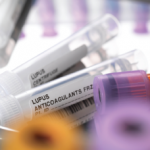Evaluation of these criteria demonstrate they offer superior sensitivity to the 1982/1997 ACR criteria and the Systemic Lupus International Collaborating Clinics (SLICC) 2012 criteria across many subgroups of patients, including patients of varying ethnic backgrounds.4
Disease Activity Trackers
Dr. Furie also discussed several disease activity tracking measures commonly used in research and, to a certain extent, in clinical practice. The SLE Disease Activity Index (SLEDAI) and the British Isles Lupus Assessment Group (BILAG) are two such instruments, and mentioned that composite indices, such as the SLE Responder Index (SRI) and BILAG-based Composite Lupus Assessment (BICLA), have proved helpful in a number of clinical trials.
Dr. Furie said that when it comes to lupus, disease activity begets damage, which in turn begets more damage. In a study of 649 patients in the University of Toronto Lupus Clinic cohort, patients with higher SLEDAI-2K at study entry and patients receiving high doses of glucocorticoids were more likely to incur organ damage progression.5
New Drugs
After many years without new SLE drug approvals, a number of medications have recently been made available. Belimumab, a monoclonal antibody directed against soluble B lymphocyte stimulator (BLyS), is now approved by the U.S. Food & Drug Administration (FDA) for the treatment of SLE and lupus nephritis. Anifrolumab, a monoclonal antibody that binds to subunit 1 of the type I interferon receptor, was approved by the FDA in July 2021 for the treatment of SLE. And voclosporin, a calcineurin inhibitor, was approved by the FDA in January 2021 for the treatment of lupus nephritis.
Not only do rheumatologists now have more tools to use in the treatment of SLE and its complications, but there is also an increased appreciation of the role drug monitoring may play in management of the disease.
According to a paper by Petri et al., thrombotic events were reduced by 69% in patients with mean hydroxychloroquine (HCQ) blood levels ≥1,068 ng/mL, as quantified from whole blood in solution with ethylenediamine tetracectic acid (EDTA), vs. those with levels <648 ng/mL.6
Jason Liebowitz, MD, completed his fellowship in rheumatology at Johns Hopkins University, Baltimore, where he also earned his medical degree. He is currently in practice with Skylands Medical Group, N.J.
References
- Izmirly PM, Parton H, Wang L, et al. Prevalence of systemic lupus erythematosus in the United States: Estimates from a meta-analysis of the Centers for Disease Control and Prevention national lupus registries. Arthritis Rheumatol. 2021 Jun;73(6):991–996.
- Deng Y, Tsao BP. Genetic susceptibility to systemic lupus erythematosus in the genomic era. Nat Rev Rheumatol. 2010 Dec;6(12):683–692.
- Aringer M, et al. 2019 European League Against Rheumatism/American College of Rheumatology classification criteria for systemic lupus erythematosus. Arthritis Rheumatol. 2019 Sep;71(9):1400–1412.
- Johnson SR, Brinks R, Costenbader KH, et al. Performance of the 2019 EULAR/ACR classification criteria for systemic lupus erythematosus in early disease, across sexes and ethnicities. Ann Rheum Dis. 2020 Oct;79(10):1333–1339.
- Urowitz MB, Gladman DD, Ibañez D, et al. Effect of disease activity on organ damage progression in systemic lupus erythematosus: University of Toronto Lupus Clinic cohort. J Rheumatol. 2021 Jan 1;48(1):67–73.
- Petri M, Konig MF, Li J, et al. Association of higher hydroxychloroquine blood levels with reduced thrombosis risk in systemic lupus erythematosus. Arthritis Rheumatol. 2021 Jun;73(6):997–1004.



